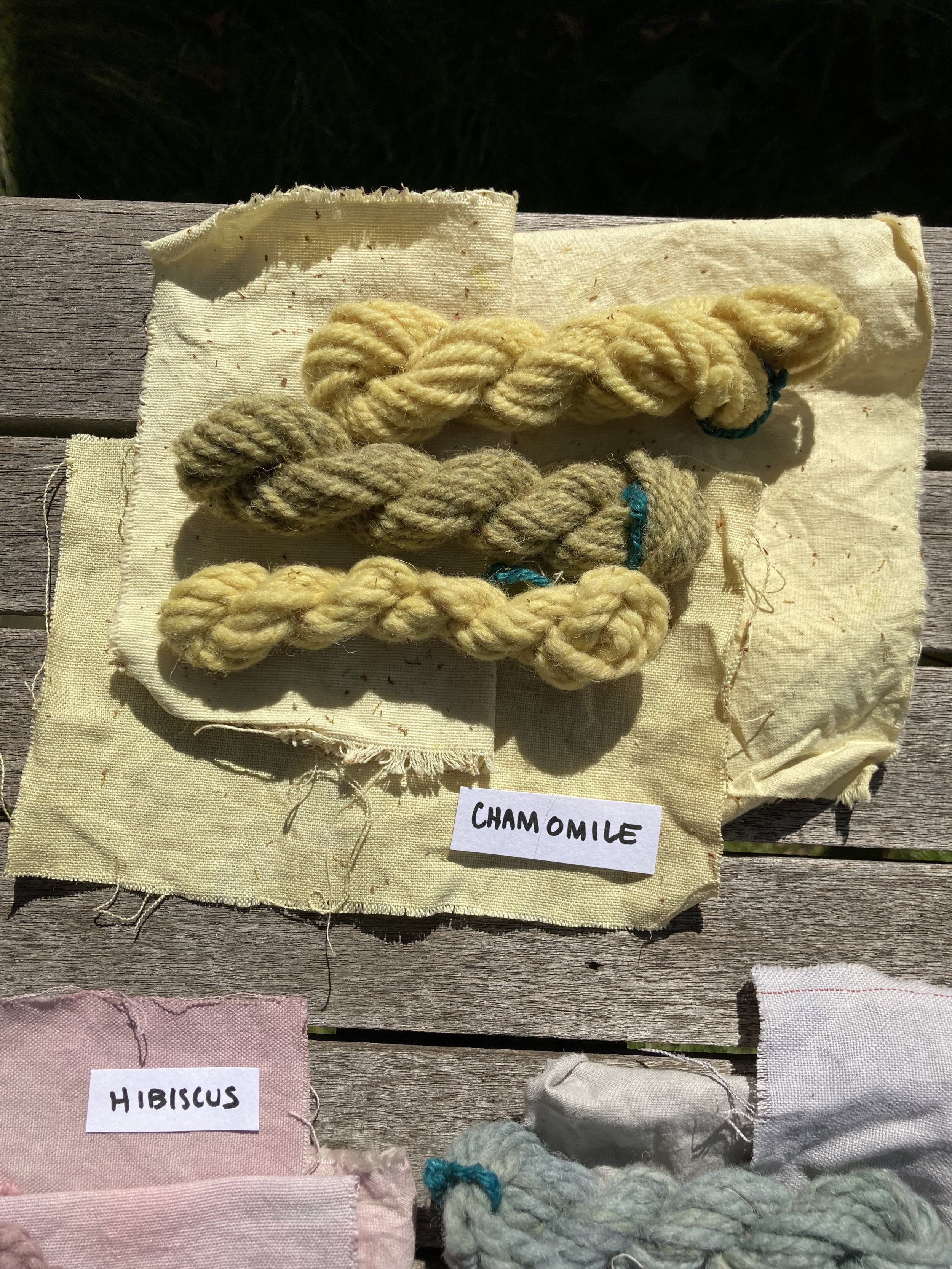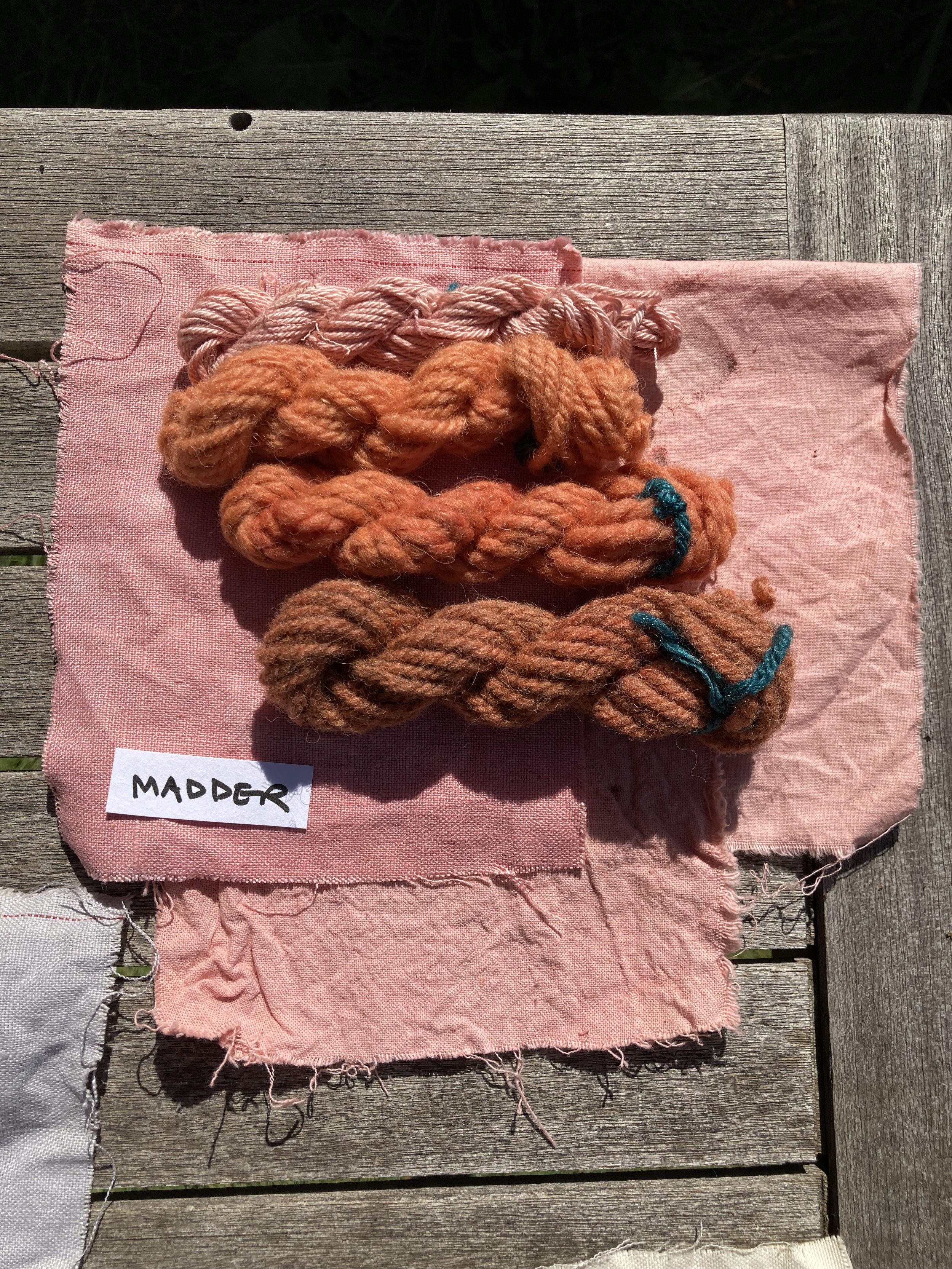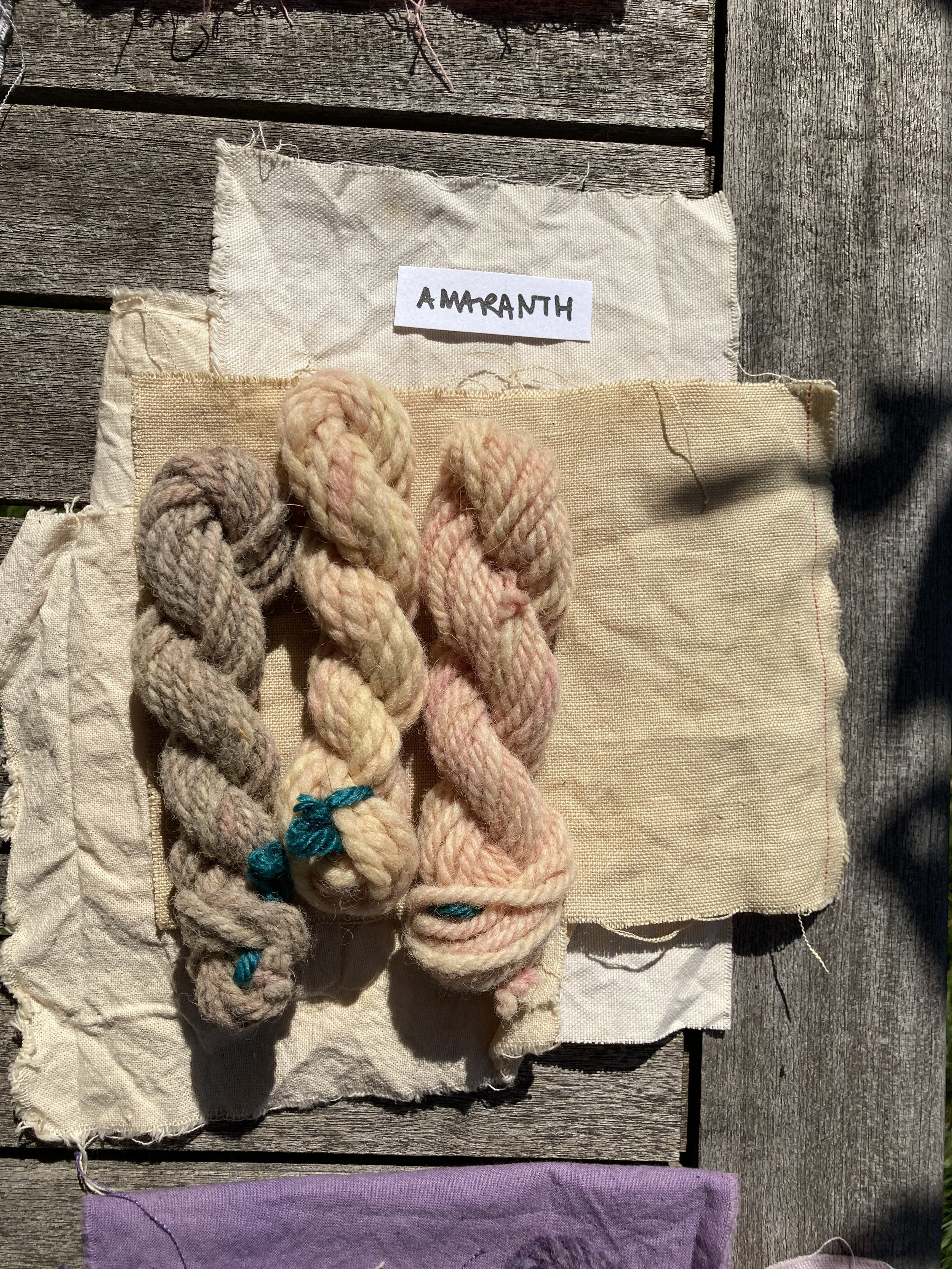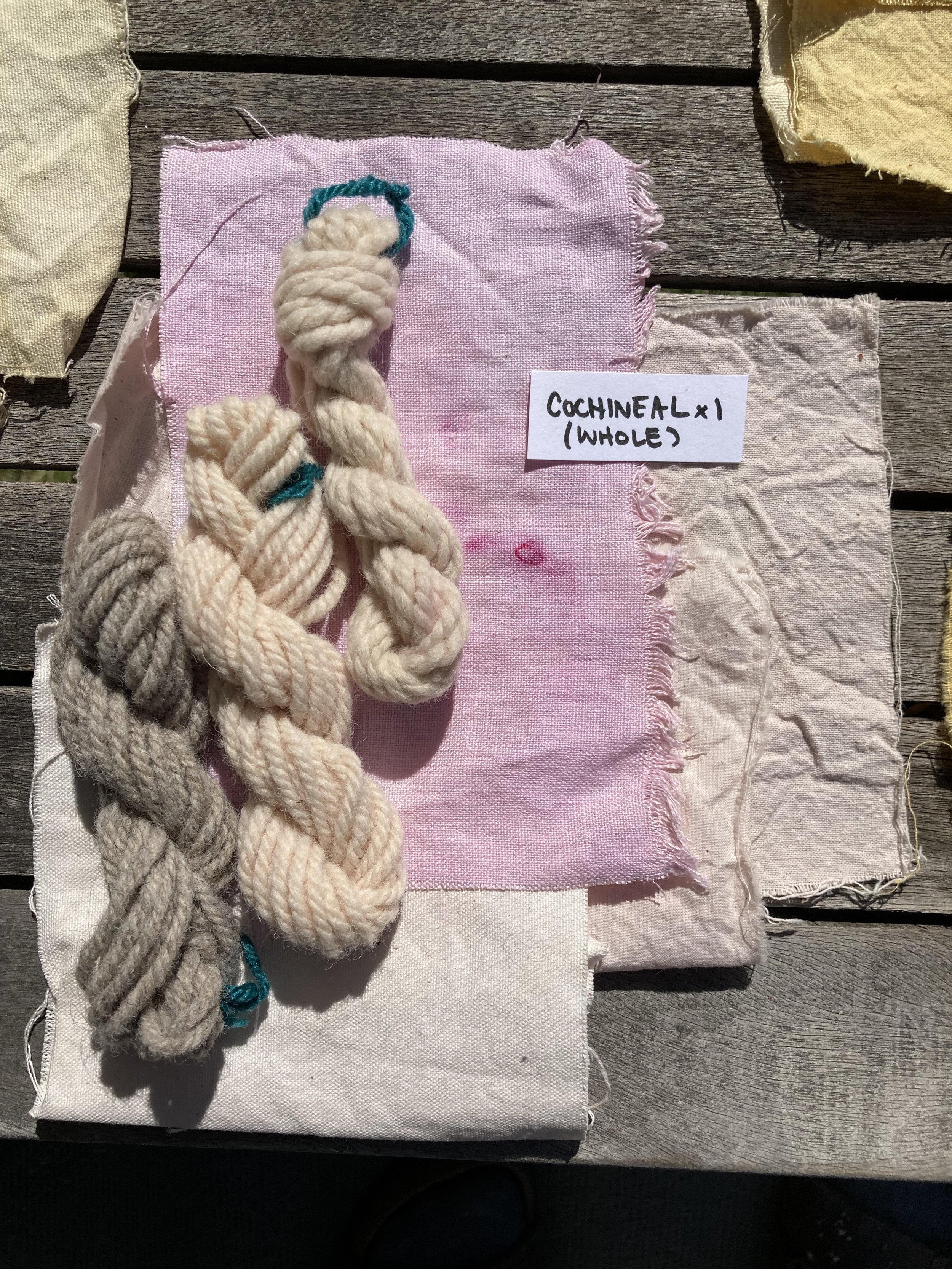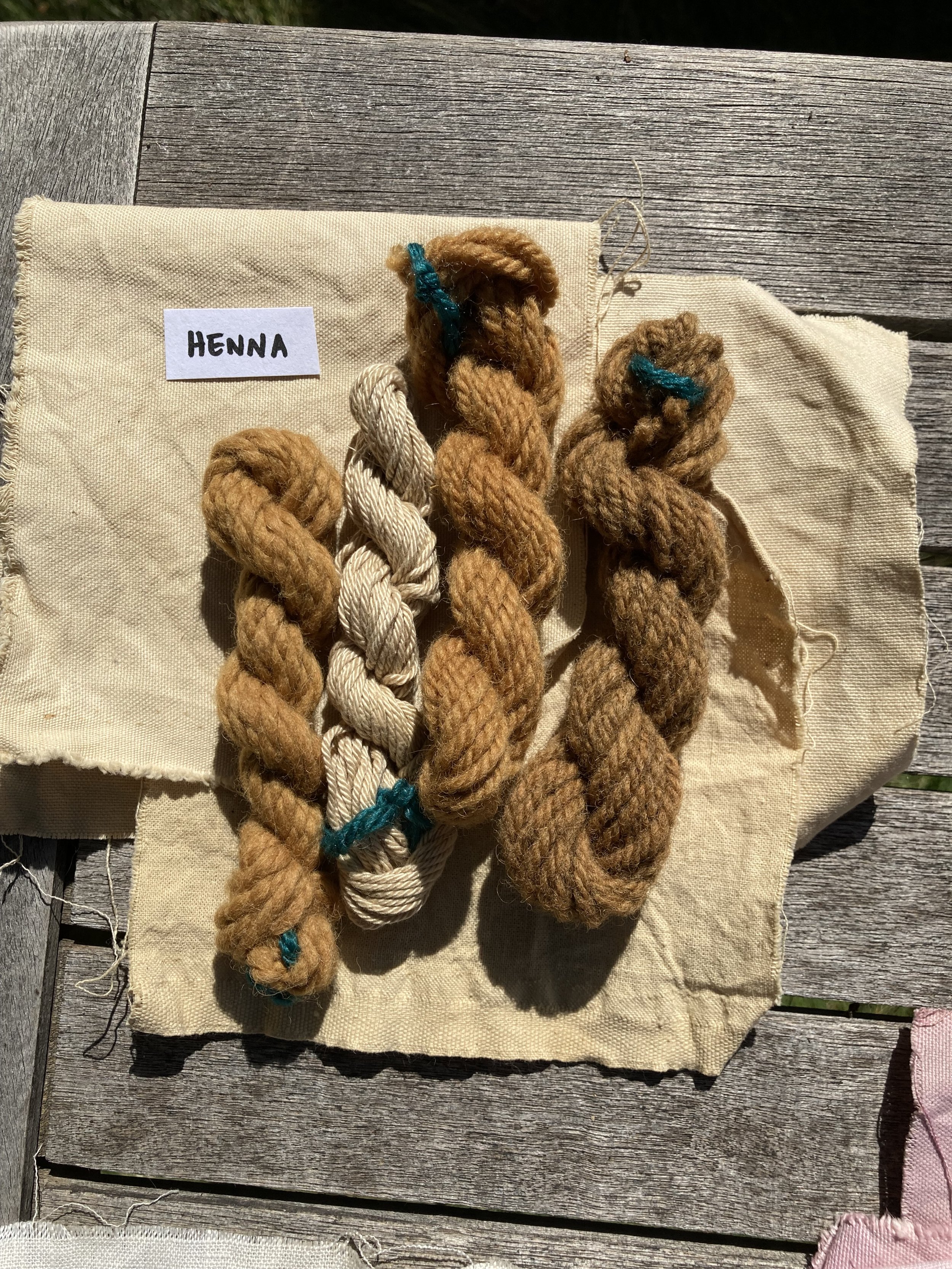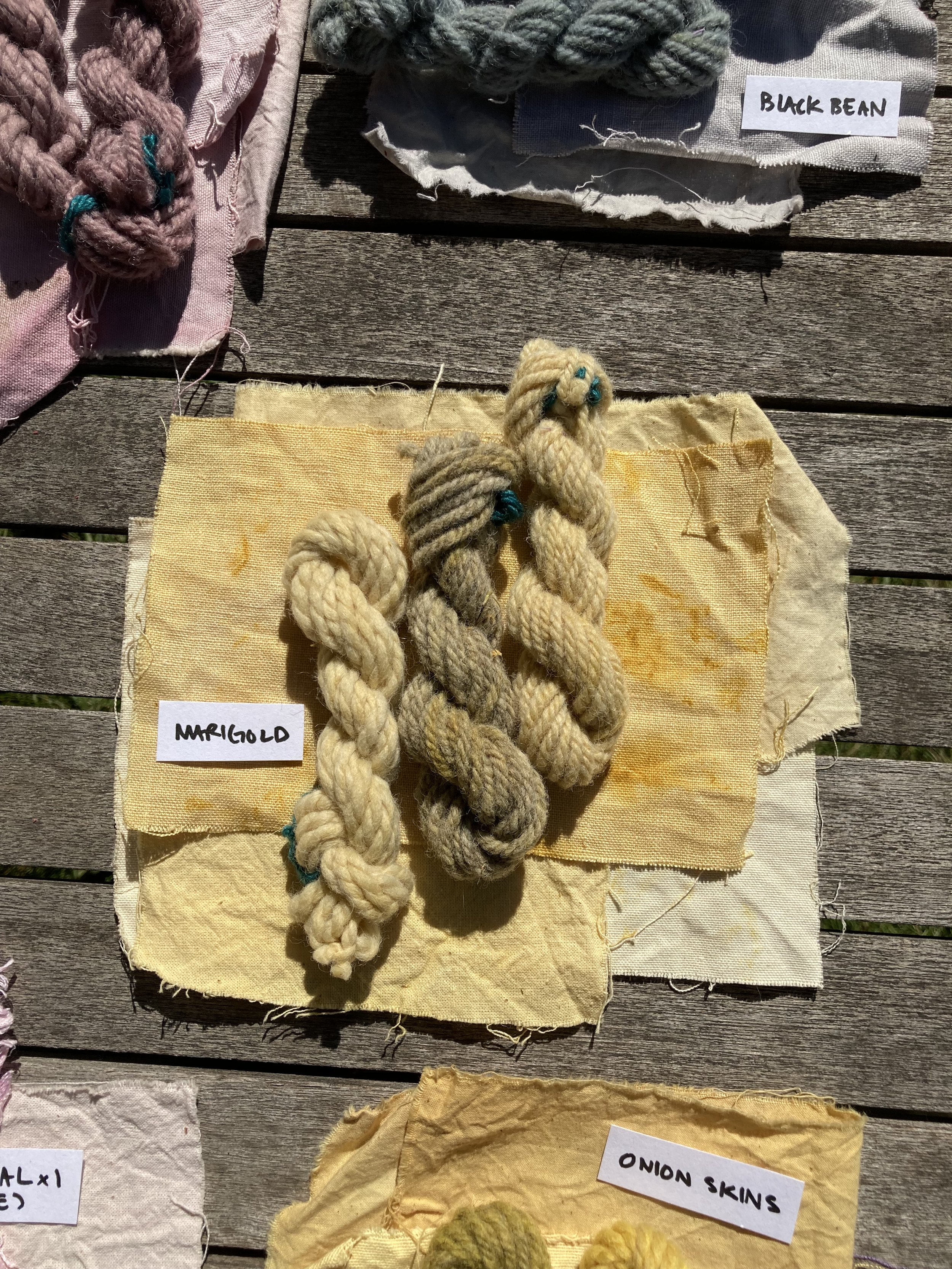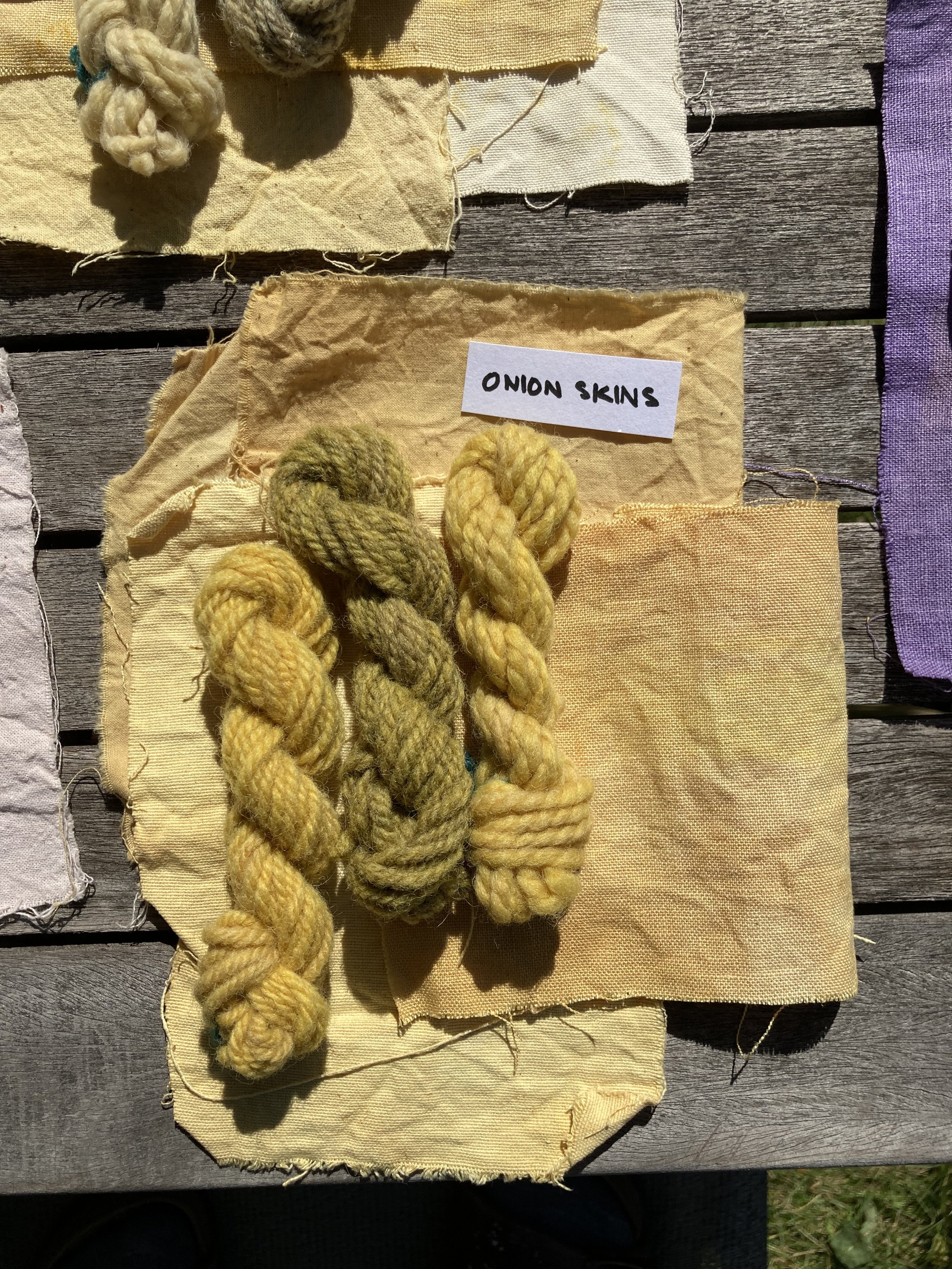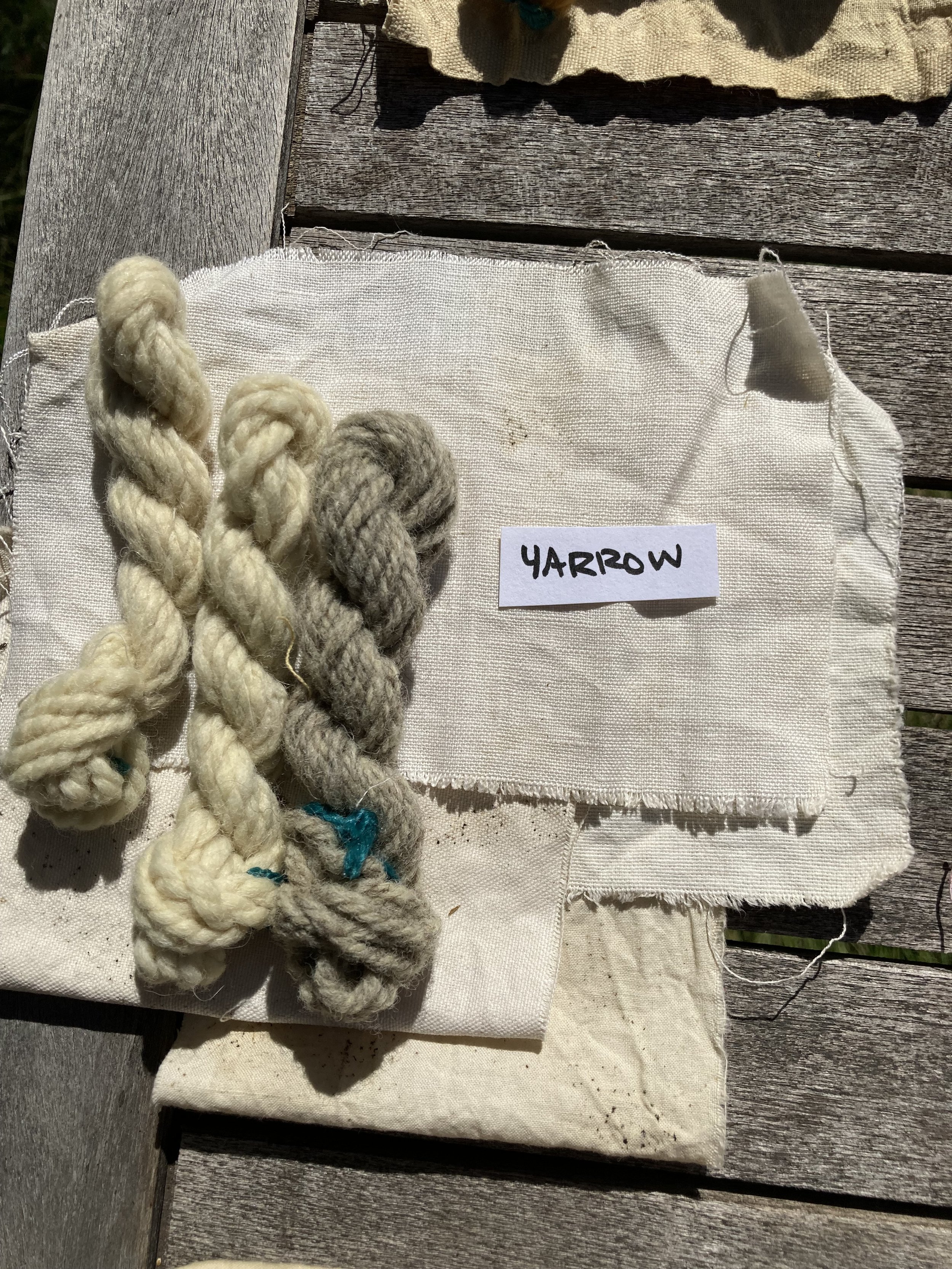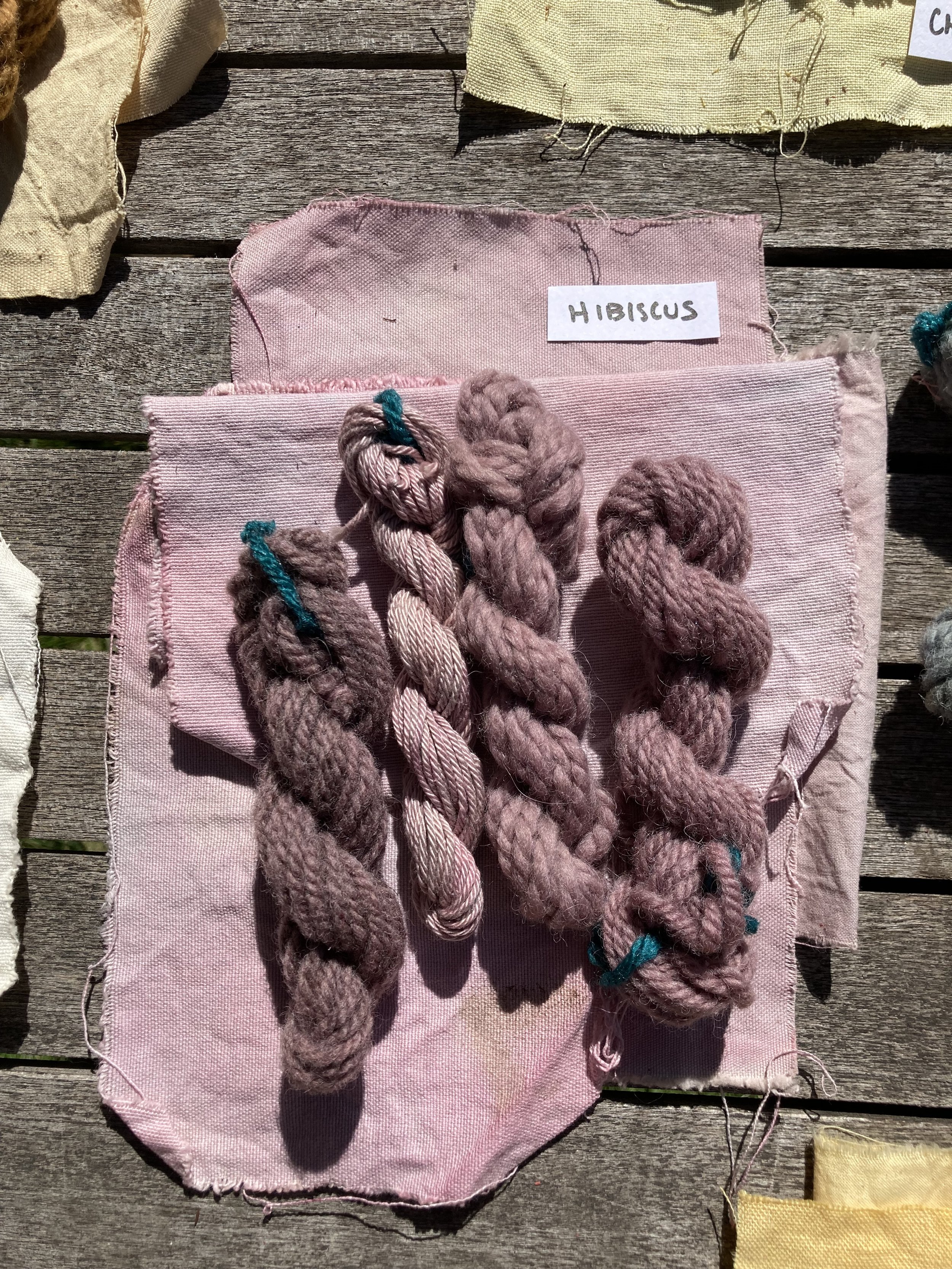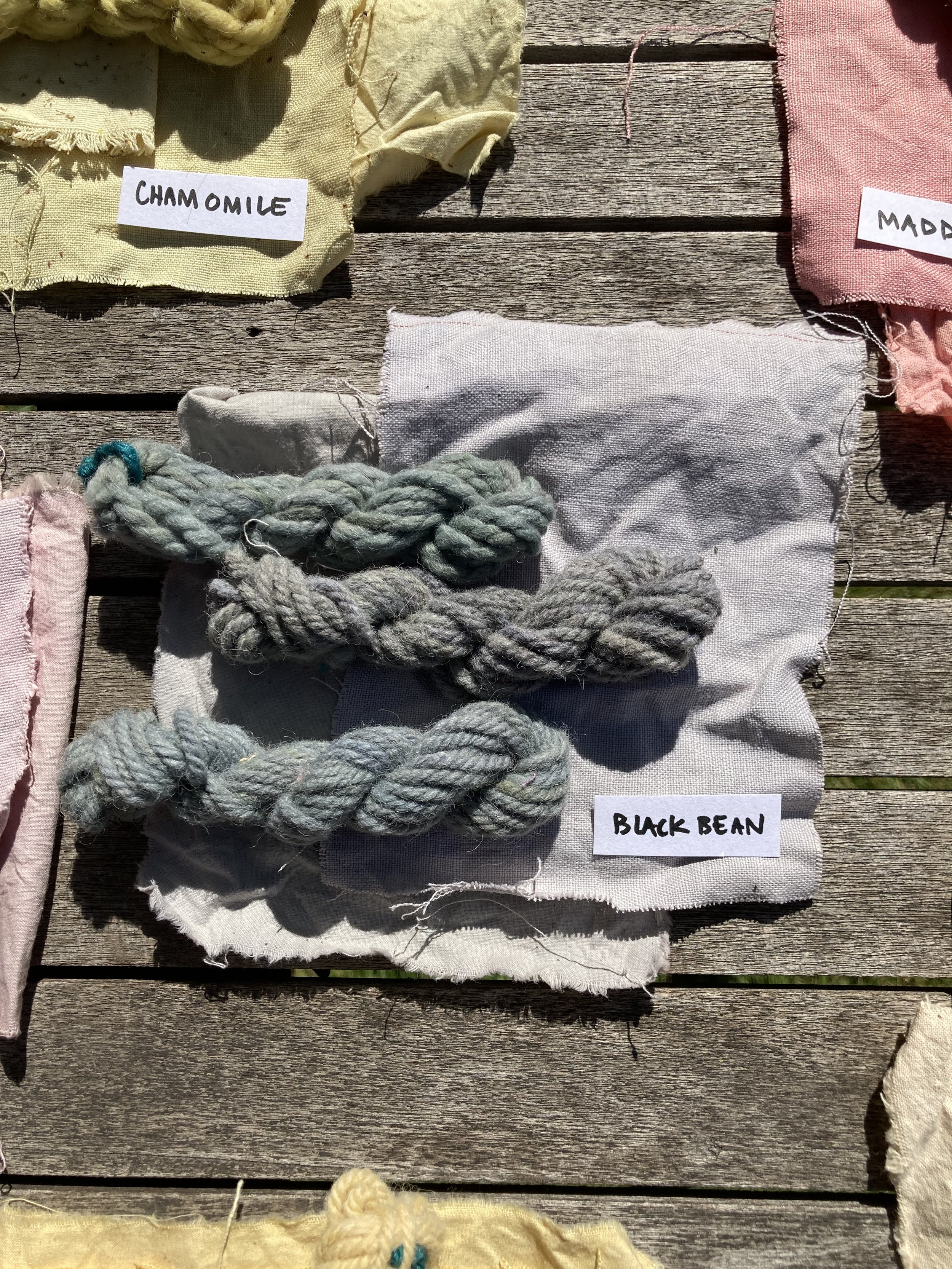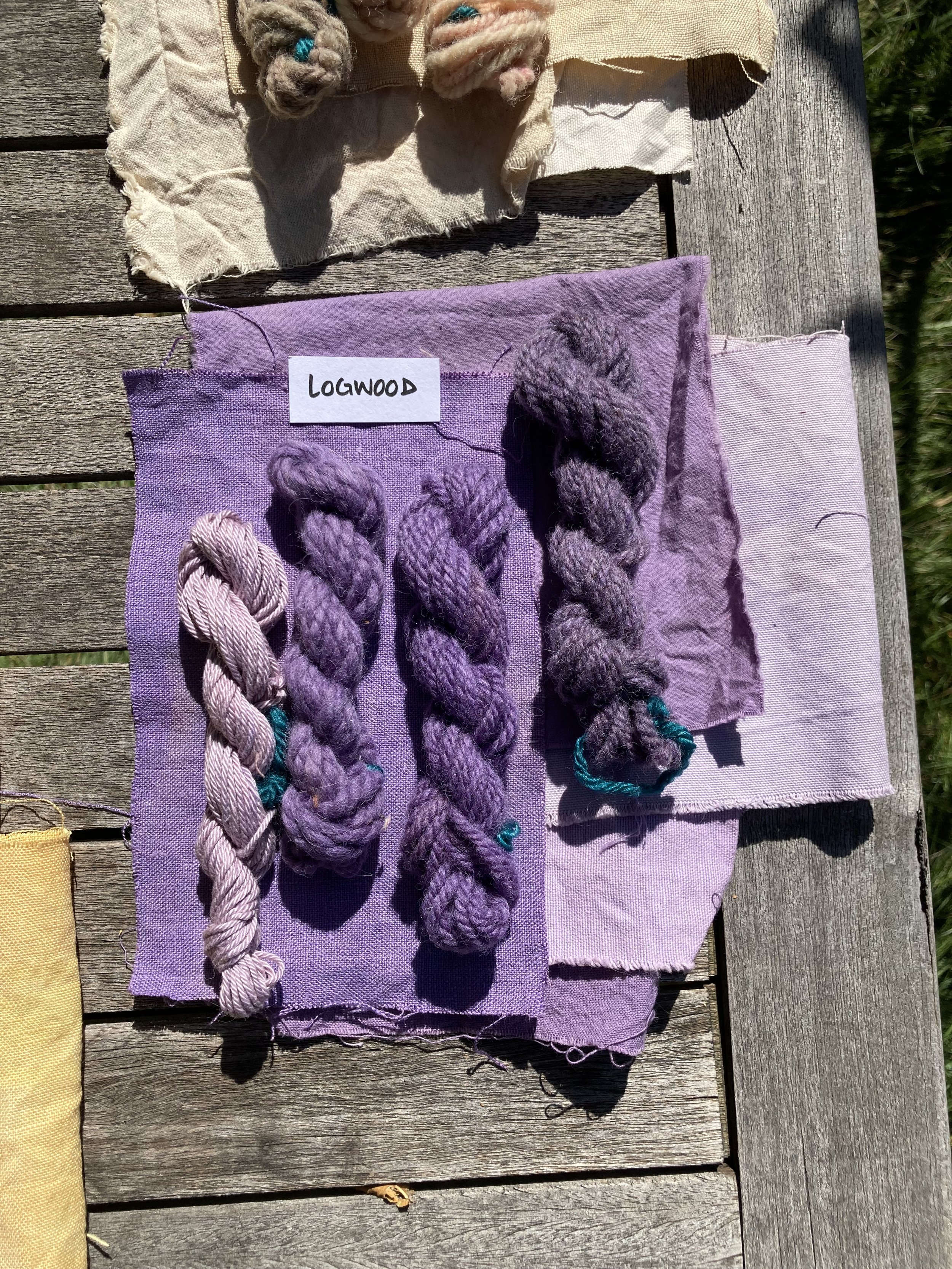Solar Dyes Part II
Ever since last summer’s research into solar dyes I have been pretty obsessed. This summer, I dove head first and used what I learnt to make more vibrant colours and tried so many new dye plants! For a beginner guide to solar dyes, check out my previous post, Solar Dyes Research Part 1!
This time, I decided to mordant my fibers before they went into jars, although this did add some time and steps. I like the ease of tossing a teaspoon of alum into the jars with the dye, but I decided to see if the pre-treatment made any big difference. I won’t really know once I can see months from now if it is more light fast than last year. I scoured and mordanted wool, alpaca, cotton and bamboo yarn, as well as linen, cotton, hemp fabrics.
Using kitchen scraps I collected over the year, I loaded my mordanted fibers into jars with onion skins, and pomegranate rinds. I pulled some black beans, hibiscus and chamomile from the cupboards. From the garden, I plucked some amaranth, marigolds and yarrow. Lastly, from the dye cupboard I pulled out cochineal bugs, henna powder, logwood chips and ground madder root. I put each dye stuff inside with the mordanted fibers, and left the measuring spoons in the drawer. One thing I love about the solar dye process is the spontaneity- and because I am not wanting to replicate results, I find the “ish” measurements to be freeing.
I left the loosely closed jars in the garden to work their magic! the first few days when the water starts to take on the colour is so exciting, and each time I went to shake and disperse the fibers I became more and more anxious to open the jars. I had planned to wait four weeks, however had to put off opening the jars until about 6 weeks.
Here are the results of round 2! I hung them to dry, then laid them out with labels to inspect the results!
What I liked about this method is that it was like watering a garden- a daily rhythm of checking in, caring in a routine manner, and then getting on with my day. I like the daily ritual as a gentle way to connect with the dye process. Maybe the long process is appealing to the life long ceramic artist in me.. fast processed don’t have the romance of a slow burn!
I terms of colours, I love quite a few of these.
Next time, I think having the chamomile inside of a tea bag or spice pouch is a good idea, as the yarns are covered in debris. The cochineal is quite dull, however I had never used just a bug without crushing it first or making an extract. I would like to try this again to see if I can get the intensity from this bug that I know and love when I do a more involved processing of the bug.
I decided to keep the dye bath, or ‘tea’ from inside of the jars of some of the dyes (logwood for example) to use again as an exhaust dye bath. I think it may even work in a hot dye process, but it seems a shame to dump that gorgeous purple water without using it again. You can always put the dye water into a plastic container (milk jugs are great!) and put it into the freezer to save it for a rainy day.
Have you tried any other kitchen scraps or dyes I should include in my next batch? Let me know!



